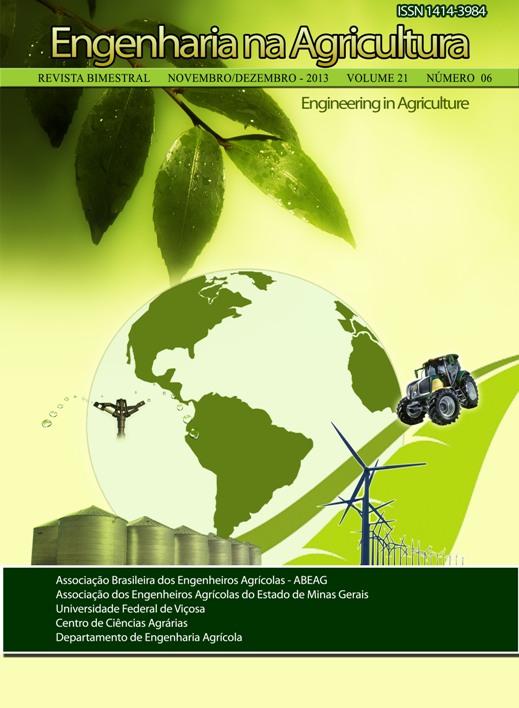ELECTRIC SIGNALS AS A TOOL FOR SEPARATION OF EARTHWORMS (Eisenia fœtida) FROM HUMUS
DOI:
https://doi.org/10.13083/reveng.v21i6.411Palavras-chave:
Vermiculture, vermicomposting, electricity pulsing, earthworms.Resumo
Improving the efficiency of the earthworms separation process from its substrate (humus) is important because this is the most labor and time intensive stage. In this study the same techniques used in electrical fishing was employed with some adaptations for earthworm separation. Therefore, the effect of an electric field produced by controlled electric signals was studied for displacement of the earthworm Eisenia fœtida. The study was conducted at the Energy in Agriculture Laboratory of the Department of Agricultural Engineering, Federal University of Viçosa, MG. The earthworms preferentially moved towards one of the electrodes, as observed in more than 90% of the cases. Therefore, based on these results, it could be concluded that utilization of controlled electrical signals is technically suitable for separation of earthworms from humus.Downloads
Downloads
Arquivos adicionais
Publicado
Como Citar
Edição
Seção
Licença
Autores que publicam nesta revista concordam com os seguintes termos:
O(s) autor(es) autoriza(m) a publicação do texto na da revista;
O(s) autor(es) garantem que a contribuição é original e inédita e que não está em processo de avaliação em outra(s) revista(s);
A revista não se responsabiliza pelas opiniões, ideias e conceitos emitidos nos textos, por serem de inteira responsabilidade de seu(s) autor(es);
É reservado aos editores o direito de proceder a ajustes textuais e de adequação às normas da publicação.
A partir da submissão, o autor estará cedendo integralmente seus direitos patrimoniais da obra à publicação, permanecendo detentor de seus direitos morais (autoria e identificação na obra) e de acordo com a Licença Creative Commons, CC BY-NC.








 Esta obra está licenciada com uma Licença
Esta obra está licenciada com uma Licença 